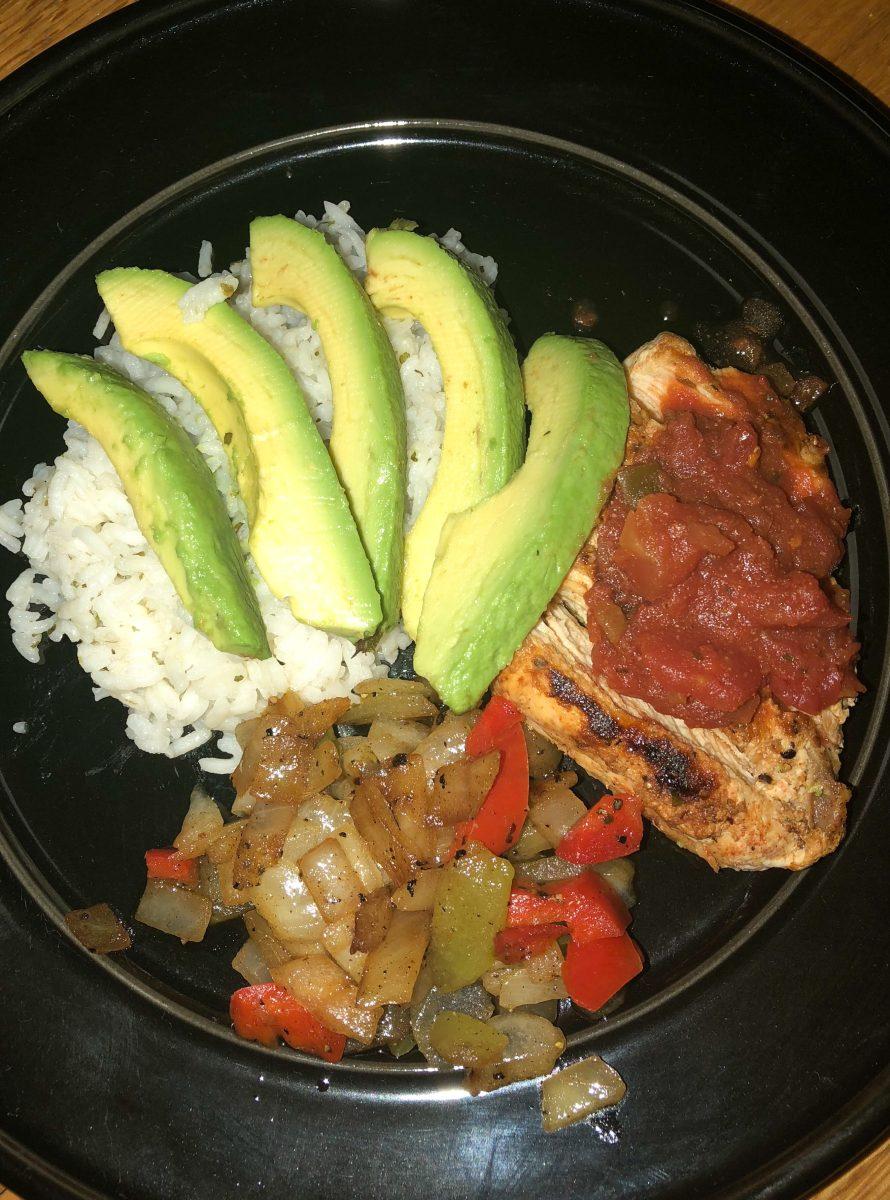Maintaining a healthy diet in college.
New diets surface faster than consumers can finish saying the word “diet.” The paleo, vegan and Atkins diets are among the most popular. One of the issues that dietitians believe they each share is that they may not be sustainable and could cause people to fall back into their old, unhealthy habits.
Beginning to lead a healthier lifestyle may seem overwhelming and daunting, with plenty of questions plaguing the mind What’s a healthy option? What isn’t a healthy option? How much should I be eating? Sometimes, there isn’t a clear-cut answer. However, adopting these five healthy eating habits would be a great first step.
Drink the correct amount of water
The Institute of Medicine states that women should drink at least 72 ounces of water per day and men should drink at least 104 ounces. The institute cites many reasons it is beneficial to drink enough water daily, including keeping one’s body hydrated and improving brain function. Infusing water with lemon and other fruits is a great way to enhance its taste as well.
Pay attention to portion size
The serving sizes on the nutrition labels of all packaged foods are based on a 2,000 calorie diet, which is just a general suggestion. To get a more individualized calorie count, there are several calorie calculator websites and apps, like “My Plate.” My Plate will even break down a person’s individualized calorie count into the percentage of each food group that person should consume per day.
Choose healthy snacks
There are several healthy snack options out there, with one of the most common being fresh fruit. Tiana Santos ‘19 notes fruit as being one of her favorite snacks.
“I love eating pretty much all fruits, getting smoothies in Campion, and having yogurt bowls,” Santos said.
Keeping a fruit bowl stocked up will make it much simpler to snack on some fruit daily.
Get creative with meals
Chicken breast with a side of veggies may tend to get boring and dull. Try making some classic dishes in healthier ways, like a zucchini spaghetti dish or a burrito bowl with chicken, avocado, rice and fresh salsa.
Maria Gallo Pavajeau ‘19 has lost over 40 lbs since starting at St. Joe’s and said that one of the reasons for her weight loss is her love for cooking and creating fun meals.
“My new obsession is making these turkey burgers with peppers and onions,” Pavajeau said. “I also love looking up new recipes and making meals in my slow cooker. I make really good beluga lentils.”
Experiment with cutting out FODMAPs
Certain foods trigger bloating and poor digestion, which in turn affects overall health. Studies conducted by the American College of Gastroenterology have shown that eating a low amount of fermentable oligosaccharides, disaccharides, monosaccharides and polyols (FODMAPs) diet is beneficial for those who have adverse effects from any of the foods in this category. Some of which include lactose, found in dairy products, and fructans, found in gluten grains.
Each individual is different and requires a personalized diet, so FODMAPs may be something worth paying attention to.
Although leading a healthier lifestyle is important, it is also important to remember it’s not necessary to completely cut out all of those unhealthy foods forever. Moderation is key.
“I don’t believe in depriving myself of the unhealthy things that I like, because I’m too young for that nonsense,” Santos said. “If there is a treat in sight, I’m definitely not going to avoid it.”

















































